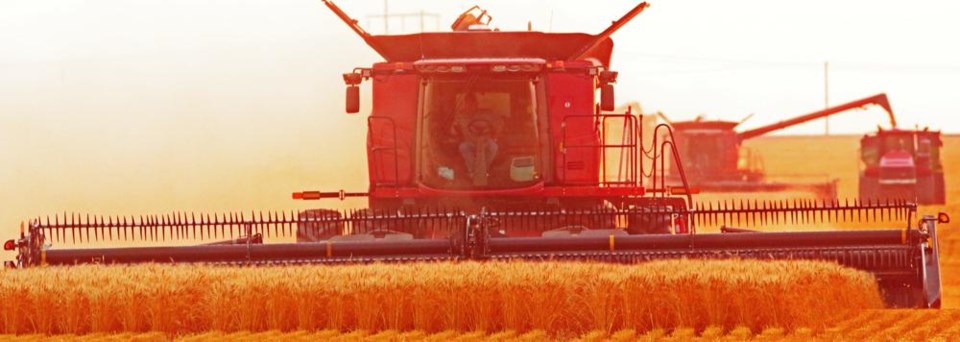REGINA - Harvest has progressed nicely this past week with 68 per cent of this year’s crop now in the bin, according to the weekly crop report for the period of September 5 to 11. This is up from 51 per cent last week, ahead of the five-year average (2018-2022) of 52 per cent and the 10-year average (2013-2022) of 48 per cent.
Combines continue to roll across the province with the end of harvest in sight for many producers. The southwest is near completion at 93 per cent. The west-central is not far behind at 78 per cent complete. The east-central and northeast are now past the halfway point, with 54 per cent and 55 per cent complete respectively. The northwest continues to make great progress at 39 per cent complete.
Field peas and lentils are nearly completed, with 96 per cent of each in the bin. Chickpeas continue to be harvested quickly, with 78 per cent of the crop off. Spring seeded cereals have been the main focus of producers for the last few weeks. Barley is now 86 per cent complete, durum is 88 per cent, spring wheat is 75 per cent and oats are 58 per cent complete. Triticale harvest is essentially complete with 99 per cent of the crop off. Eighty-nine per cent of the harvested triticale has been allocated for use as livestock feed. Producers are now turning their focus to oilseed harvest, with 84 per cent of mustard, 42 per cent of canola, 31 per cent of soybeans and 25 per cent of flax in the bin.
Provincially, quality is slightly above the 10-year average for peas, lentils and durum. Pea grades are mainly 1 CAN at 39 per cent or 2 CAN at 57 per cent; this is slightly above the 10-year average of 38 per cent 1 CAN and 54 per cent 2 CAN. Lentils are very similar, with 31 per cent of the crop 1 CAN and 57 per cent 2 CAN; the 10-year average is 28 per cent 1 CAN and 49 per cent 2 CAN. Durum grade quality is reported at 32 per cent 1 CW, 46 per cent 2 CW and 22 per cent 3 CW. This is ahead of the 10-year average of 34 per cent 1 CW, 27 per cent 2 CW and 22 per cent 3 CW.
Pockets of rain moved through the province and halted combines momentarily this week; however, no major rain events were reported. The North Battleford area received the most rain with 25 mm recorded. Topsoil moisture remains unchanged with 35 per cent of cropland having adequate moisture, 41 per cent short and 24 per cent very short.
Cropland topsoil moisture remains relatively unchanged, with 36 per cent having adequate moisture, 39 per cent is short and 25 per cent is very short. Hay and pasture land topsoil moisture increased this week, with 29 per cent having adequate moisture, 40 per cent is short and 31 per cent is very short.
Twenty-nine per cent of hay and pasture land has adequate moisture, 42 per cent are short and 29 per cent are very short.
Crop damage this past week is due to light frosts in the north, drought conditions in the south and grasshoppers. Producers are busy swathing, combining and desiccating canola. Producers are also moving cattle onto stubble fields, hauling water and preparing for winter.
Harvest is a very busy and stressful time for producers. They are reminded to take safety precautions in all the work they do. This includes having fire mitigation resources at the ready and taking precautions when working around powerlines. The Farm Stress Line is available to provide support to producers toll free at 1‑800‑667‑4442. The public is reminded to take extra caution, time and space when encountering machinery on the roads.




